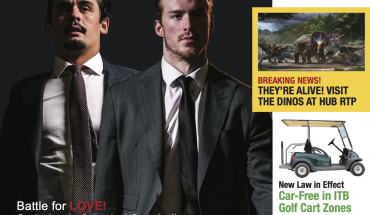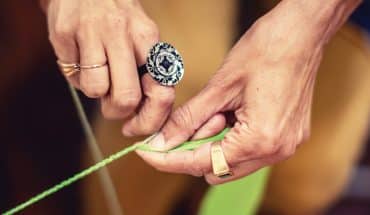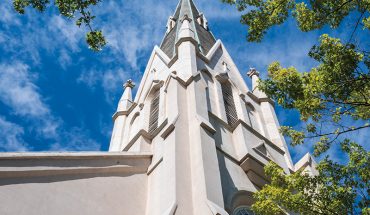by Ippy Patterson
At 63, having been preoccupied with death as long as I could remember, squeamish, and having never taught anything in my life, I was asked whether I could help run a drawing group in the Duke University anatomy lab, where all first-year medical students learn human anatomy through dissection of cadavers.
A second-year Duke medical student, Emma Fixsen, had initiated a pilot project that would offer first-year medical students the chance to draw what they were learning in anatomy class: the muscles, veins, arteries, organs, and 206 bones of the human body. Emma had an undergraduate degree in art from UNC-Chapel Hill and a passion for drawing. Dr. Frank Neelon, a member of the Duke medical faculty (whose son is married to my cousin), had suggested I might be able to help her run the class. I have been an artist most of my life, but my subjects have primarily been plants and animals – alive.
I met with Emma and her friend Winston Liu, also a second-year med student. I confessed to them that as a mother I had put Band-Aids on my children while looking the other way, that I knew nothing about human anatomy, nothing about teaching. Perhaps if I could enlist a close friend, Jane Holding, a sculptor who had studied anatomy, who builds figures from the bones outward, then maybe. Jane said yes.
Before committing, I thought I should first test whether I could manage looking at a cadaver. The dread I felt going toward my first visit to the lab was almost overwhelming, a darkness trickling through the pages of the calendar as the date drew near. Emma and I had coffee and reviewed ideas: how to structure the sessions, how many students would be our limit, what sorts of exercises would be useful, what art supplies we’d need, and so on. All of this seemed doable while contemplating the beauty of coffee in a bowl, the energy of this young person talking to me, the morning air, pastries on racks, buses gliding by in the plate-glass window.
Life and the living.
First visit to the anatomy lab
From the café, the two of us went to the hospital basement, the lab with its code-locked door. Inside were dazzling overhead lights and three galleries of steel gurneys, each supporting blue plastic zippered bags – the embalmed bodies of men and women who had conscientiously offered their remains to science: a grandmother, grandfather, mother, father, sister, brother, wife, husband, daughter, son.
Emma put on a lab coat and gloves, gave me gloves, unzipped a bag, removed ribs as easily as one would take a lid off of a casserole or the top off a carved pumpkin, and then proceeded to show me a lung, a heart, a liver, lifting each organ, already surgically detached, then gently returned it to its proper place. She made comments on the care of an incision or the condition of an organ and generally celebrated the near miracle of how the body works.
After this first visit I went home, curled up in bed and fell into a trance-like sleep, awaking to an image of Emma, this energetic, lithe, red-haired woman with patterned socks who ran marathons that required, now and then, lifting boulders out of the way; a fellow artist, who, with almost no free time, between shifts in the delivery room and emergency room, was putting together a curriculum she believed would be invaluable to medical students. Emma was the last living person I had seen before descending into the underworld. I reached for my cell phone and googled her. There she was, 28 years old, co-author of papers published in Nature and Cell, and also, at one time, a DJ.
~
I was especially concerned about the absence of desk space in the lab.
At NYU, the Art and Anatomy workshop (which had impressed Emma when she interviewed there) takes place in a room that adjoins the university’s anatomy lab. People from all departments of the medical school sit at long tables, their sketch pads and drawing pencils, brushes and pastels in easy reach. Artists may or may not choose to sit right next to a cadaver.
Here at the Duke lab, just inches away from a dead foot or head, we would be improvising with drawing boards on stools in front of us or on our laps, our little bags of tools tucked somewhere on a ledge or a gurney.
I contacted Laura Ferguson, creator and teacher of the course at NYU, for advice. She was generous, quick to return an email, open to a phone conversation. I studied her work online – anatomical art at its most beautiful. Her drawings reveal her own inner body as if she were transparent, the shape of her flesh, the scoliosis of her spine, the lines of her blood.
In a short video about her called How To Draw a Human Heart, she invites the audience to view a cadaver. The skin falls away like a jacket slipping off shoulders. Here were the insides of a woman dead but still graceful. The real person, I suddenly thought: We are looking at the real person. Here was my mission then, should I decide to accept it: the opportunity to see the Truth.
Second visit to the anatomy lab
Winston Liu, working alongside Emma as the copilot of this endeavor, set a heart on a tray and the three of us perched on swivel chairs. A film, as if of cold fat, coated many of the surfaces and lamps. Chilly here; I was glad Emma had told me to wear closed shoes and warm clothes.
Emma and Winston fell into quiet, parallel concentration. These were the first drawings of Emma’s I had seen. Looking at them filled me with an intense joy. They were, in a word: ecstatic. Winston, who claimed he could not draw, poured forth a clean, fluid line, the line I had seen when I asked him to sign his name. His heart, made with just a few continuous marks, swept me into its form. Ripping sheet after sheet of newsprint, I made countless starts, waiting for my own heart to stop racing. In the parking lot at the end of the day, I realized I had left my handbag in the bathroom locker at anatomy lab and had to call Emma for help.
A last rehearsal
This time my friend Jane Holding, the sculptor, came with us. She was immediately at home and at ease in this setting. (Jane spent three years in graduate school at Cambridge studying the late middle ages, and can prepare any number of animals to serve a feast for a crowd.)
Winston Liu unzipped a bag. I was shocked. A robust man seemed to come forward much the way a person might stand in the doorway of his house. So much personality in the large legs, assertive chest, head and hands still wrapped in cloth. Winston, peering down and marveling at this man’s insides, said “What would you draw, Ippy?”
I could feel myself disintegrate, become useless. Looking out at this brown, chaotic, wet landscape – was there anything here I could draw? What was drawing anyway? Nothing, I said, I could draw nothing.
Jane opened her pad of paper, leaned against the wall, took a piece of charcoal and began to sketch the thorax.
Was this, cumulatively, a life? I felt I was looking through a portal into outer space. For every inside there is another inside. We are air.
During the weeks before our class started I thought about what drawing has meant to me over the course of my life, however uncomfortable I was feeling about the anatomy lab. In many ways, drawing has made my life. I have sat down at my desk time and again and rejoiced in the simple pleasure of closely observing the bark of a tree, the leaves on a plant, the contours of a shell.
I have drawn while dealing with experiences difficult to accept, my father unconscious and intubated, my mother as she was dying.
But how could I presume to teach these students anything? In one of her emails Laura suggested that my love of drawing would allow me to be a teacher. I wondered.
The 15 students who attended the workshop were chosen by lottery. 50 had applied out of a class of 100. They received no additional credit for this workshop. Our sessions, 4 in all, lasted roughly 4 hours each. Each session had a focus: bones, organs, hands, “live” model.
Each session, before venturing to the anatomy lab in the early evening, we’d sit down for dinner together at a conference table in the Trent Center on campus. There was an opening discussion prompted by Emma or Winston: How do you feel about your body? We then got out paper and tools and did various exercises, mostly designed to answer questions I heard one or another of them pose earlier: “How do you make something come forward?” “How do you draw a hole?” Next, we took a short walk from the Trent Center to the hospital to draw from “life.”
As we entered the lab, often accompanied by pediatric oncologist and writer Ray Barfield, there was no need to direct anyone to a particular subject. After an entire day spent studying the cadaver in an academic setting, they enthusiastically returned to look at the body in a different way. Their interest was keen. Some drew from their “own” cadavers – the ones they were assigned to study in groups of six or so. They sat together or alone, not in the least inconvenienced by the absence of proper worktables, with oversized clipboards balanced on their knees, eyes straight ahead. They were focused within minutes. From the first moment I saw the students’ marks on paper, I was enraptured.
These were spellbinding times for me. There were moments, while I was putting copies of their work on the wall, when I would catch myself suddenly wondering what was wrong – you could hear a pin drop – was it the eeriness of the anatomy lab? No, it was the beautiful sound I first heard in the fall of 1971 in Nature Lab at Rhode Island School of Design: the silence of a group of people entirely absorbed in their drawings.
I found myself wondering: Are medical students actually artists? Most of them had not drawn since third or fourth grade, yet their drawings were powerful, beautiful, full of feeling. You hear the phrase that learning to draw is learning to “see.” I have no sense that I taught these students anything. But I have every confidence in their ability to draw. They taught me that human beings are meant to draw.
Yes, we discussed a few points in our short time together; we talked about shapes, edges, angles, negative space, light, darkness. Every line we see in the world around us is nuanced with relevant information. Observing these lines with your eye shifts you into the present moment. Tracing those lines with your pencil is an even deeper pleasure.
I felt a spontaneous kinship, a love for these students. How open they were, giving their all to this experience. You can see it in the work they made. I hope they continue to draw, if not now, sometime in the future. I would like to be the voice that (someday when they sit down for a rare moment of relaxation) tells them to pick up a pencil and paper and draw their own foot.
And their voices are part of my life now. These days, when there is a scene in a film that involves surgery, or looking into someone’s flesh, I don’t cover my eyes; I have taken to looking and am interested.
The last thing I saw during our final session was a brain. Floating in a basin of formaldehyde, its spinal cord attached, nerve endings spraying out like so many vital copper wires, Emma turned it so that I could see the structures from below and the images that came to my mind were the stamens of Magnolia grandiflora, the stars on a winter night over the Outer Banks.
Duke ‘s Anatomical Gifts program holds a private memorial service at Duke Chapel each spring to honor donors and their families.








